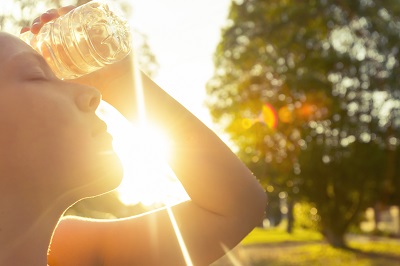
With summer in full swing and high temperatures in the forecast, HSHS St. Clare Memorial Hospital in Oconto Falls encourages everyone to be familiar with the signs and symptoms of heatstroke, as well as the steps that can be taken to avoid heatstroke.
Heatstroke is a condition caused by your body overheating, usually as a result of prolonged exposure to or physical exertion in high temperatures. It requires emergency treatment to prevent serious complications or death. If you suspect someone is experiencing heatstroke, call 911 or seek medical assistance immediately.
Heatstroke signs and symptoms
- High body temperature – The main sign of heatstroke is a core body temperature of 104 degrees or higher.
- Altered mental state or behavior – If a person who has been in hot temperatures is confused, agitated, slurring their speech, irritable, delirious or experiences a seizure, then heatstroke may be suspected.
- Nausea – Vomiting may occur.
- Flushed skin – An increase in body temperature can lead to skin turning red.
- Rapid breathing – Breathing may become rapid and shallow.
- Racing heart rate – When a person experiences heatstroke, the heart works overtime to help cool the body, therefore increasing the heart rate.
- Headache – Heatstroke can cause a throbbing headache.
Preventing heatstroke
- Wear loose-fitting clothes – Loose-fitting clothes allow for your body to cool properly as opposed to tight or heavy clothes.
- Drink plenty of fluids – Staying hydrated will help you maintain a normal body temperature and will help your body sweat.
- Protect yourself against sunburn – Use sunscreen and reapply every two hours. Also wear a hat and sunglasses to protect against sunburns. Sit under the shade from time to time.
- Take it easy during the hottest parts of the day – Try to schedule outdoor activities in the cooler parts of the day, such as early morning or the evening. The hottest part of the day is generally 10 a.m. to 4 p.m.
- Better yet, stay indoors – Avoid the heat altogether by staying inside an air-conditioned, well-ventilated space.

